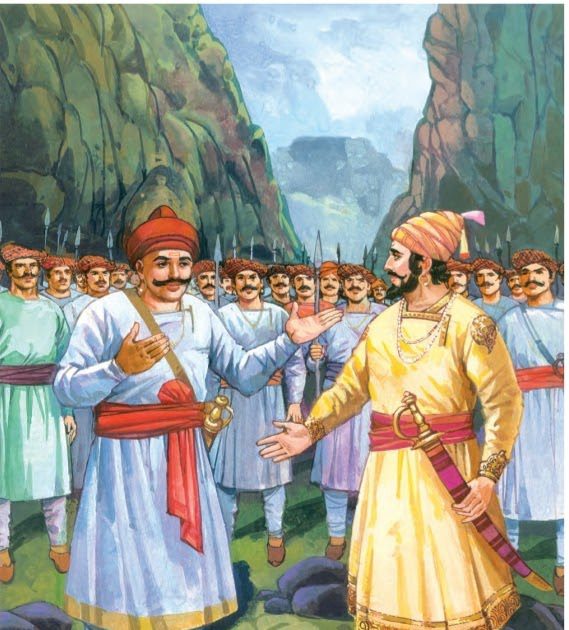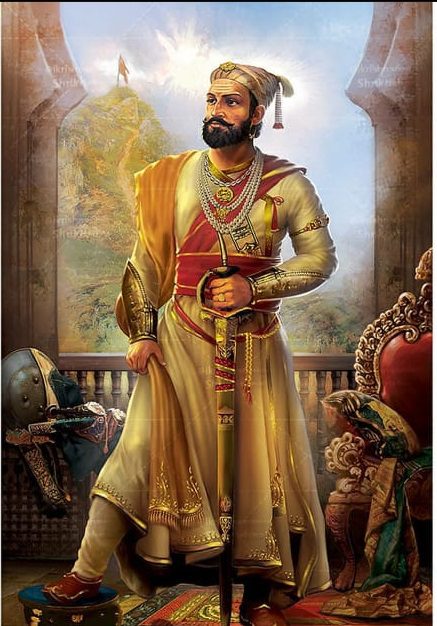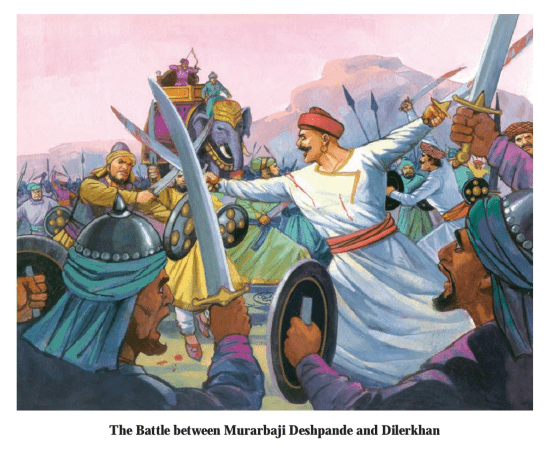In our previous article, we had covered the story of the Battle of Pratapgad the battle which initiated the first step of the Marathas towards their Hindavi Swaraj.
This victory of young Shivaji Raje raised his status both politically and strategically. Continuing this series we now cover the story of the battle of Salher.
Content
Background: Political Situation Before the Battle of Salher
The Battle of Salher in which the outnumbered Maratha decisively defeated the Mughals (about 40,000) was fought in the present district of Nashik in the year 1672. This was the war that once again revitalized the hopes of Hindavi Swaraj in the hearts of Marathas.

The rise of the Marathas in the middle of the 17thce was a turning point in the history of medieval India. As this was the time when the Mughal Emperor i.e. Aurangzeb wanted to conquer the whole of India through his bigotry policy.
Under the leadership of the great Chhatrapati Shivaji, the Marathas not only challenged the Mughals but also overwhelmed the neighboring sultanates.
After the battle of pratapgad in 1659, the aggressive tactics of the Marathas seriously decimated the authority of the Mughals at Deccan. Raje conquered fort after fort ransacking the Mughal and neighboring sultanates’ territories.
But the situation becomes bleak when Chhatrapati Shivaji Maharaj signed the Treaty of Purandar in which the Mughals completely hemmed the Maratha king from all sides.
A total of 23 forts were taken by the Mughals which was enough to shatter the morale of the Marathas. Later in 1666 CE, Raje visited Agra at the invitation of Alamgir.
The invitation later turned into a well-executed trap by the Mughals. But Shivaji Raje remained calm and in the year 1667, he escaped from Agra and reached Deccan.

Now Raje focused on taking back what was rightfully his. Moropant Pingle the Peshwa of Shivaji Raje captured several forts and later in 1670 one of Raje’s childhood friends Tanaji Malusare captured the fort of Sinhagad.
Under Shivaji, the Marathas also sacked Surat the richest city under the Mughals and later defeated them in a humiliating way at the battle of Vani Dindori
Battle of Salher 1672
In the year 1671, Chhatrapati Shivaji decided to eradicate the Mughal presence from the Baglan region. For this purpose, he assembled a force of 20,000 under the command of Moropant pingle and Prataprao Gujar.
They captured the forts of Aundha, and Patta and also took Salher and Mulher. These setbacks from the Maratha infuriated Alamgir and in return, he sent Diler Khan to stop the rapid rise of Chhatrapati Shivaji.
Diler khan and Mahabat Khan marched on Pune and ordered a public massacre. On the other hand, the subhedar of Gujarat Bahadur Khan descended on the Salher fort and laid a siege on it.
To counter this move Shivaji Raje ordered Moropant Pingle and Prataprao to stop the advance of the Mughals at Salher.
From the Maratha side, it was Prataprao Gujar who attacked the troops of Bahadur Khan. Here the Marathas were outnumbered and after harassing a large number of Mughals (around 25,000) Prataprao decided to retreat which was a tactical move.
Bahadur khan appointed Ikhlas khan to chase the retreating army of the Marathas. Later with the arrival of the Peshwa i.e. Moropant pingle the joint forces of Prataprao and the former attacked Ikhlas khan.
The battle resulted in a total disaster for the Mughals and it is believed that the Marathas were able to route the enemy troops. When the news of this thrashing defeat reached Bahadur Khan he immediately lifted the siege from Salher and the Marathas chased him all the way to Aurangabad.
A contemporary source known as Sabhasad Bakhar gives us the details of the battle. According to it, the conflict lasted for about twelve hours and more than ten thousand soldiers lost their lives.
According to the source the Marathas captured about six thousand horses, elephants, camels, and wealth.
From Maratha’s side Suryarao Kakde a childhood friend of Shivaji Maharaj was killed.
After the battle, the status of Shivaji Raje reached new heights, and he later also adopted the title of Chhatrapati in 1672. The aim of Hindavi Swaraj became clearer which later challenged the Mughals for the domination of Hindustan.
Donate to our Cause
If you support what we are doing and would like to contribute to help us grow and reach more Indians to teach them more about such forgotten historic Indian Heroes and stories, please consider donating any amount. It will help us grow

